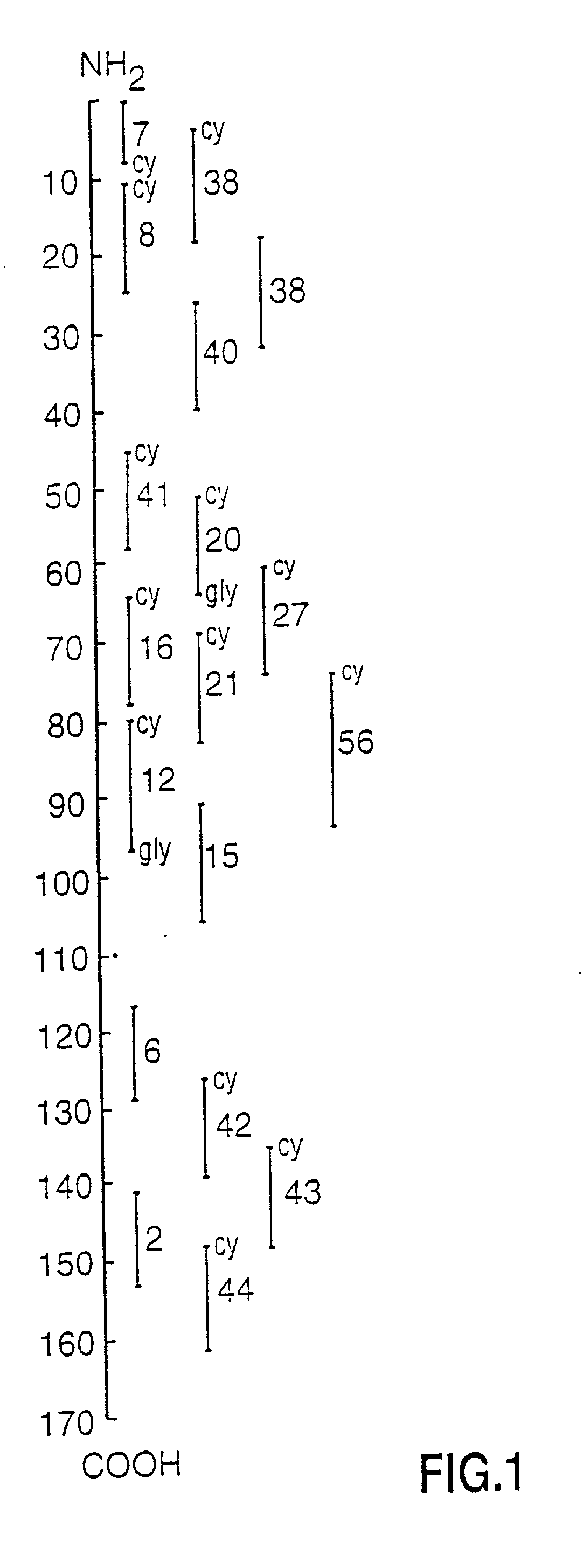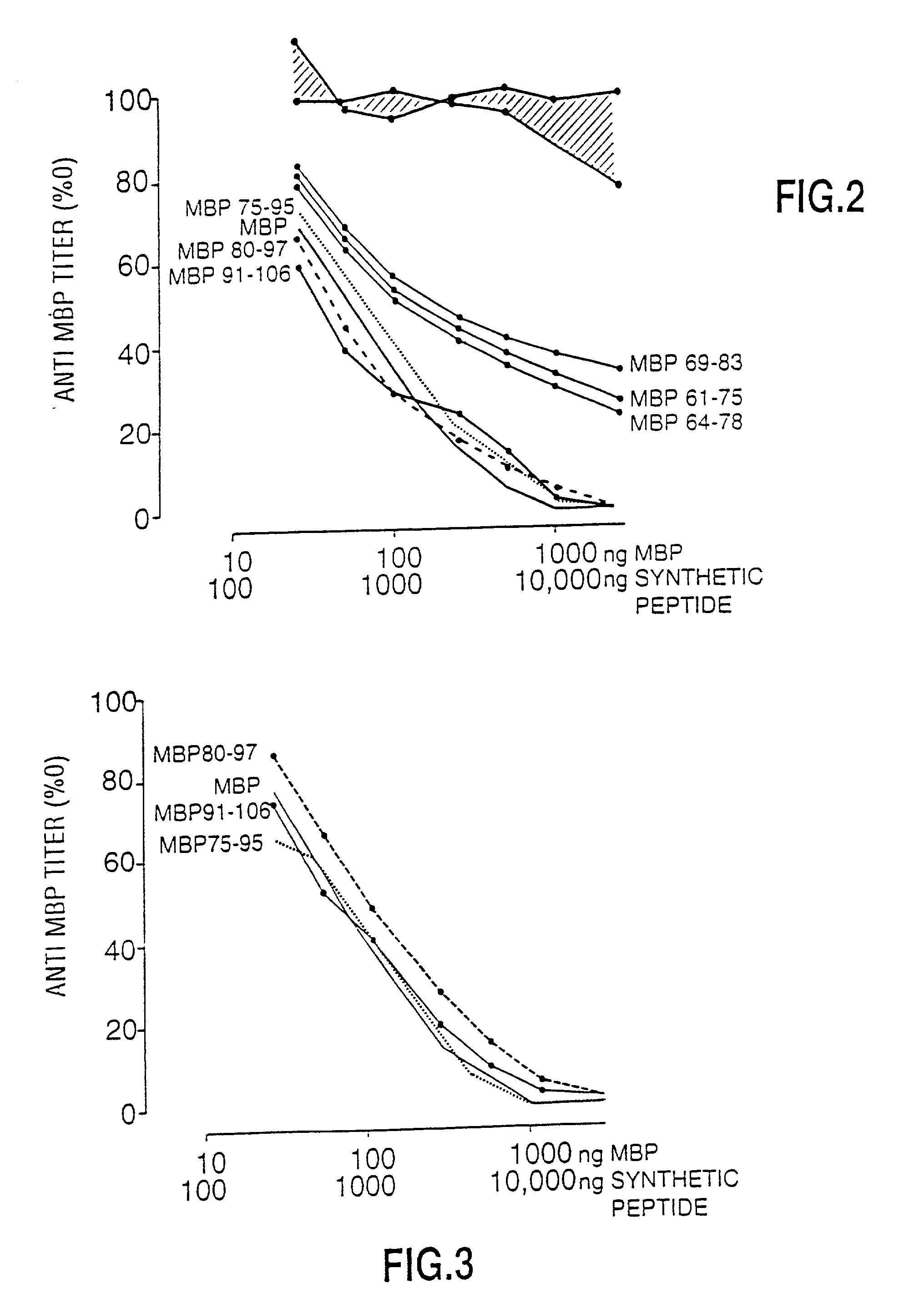Peptide specificity of anti-myelin basic protein and the administration of myelin basic protein peptides to multiple sclerosis patients
a technology of myelin and basic protein, which is applied in the direction of peptide/protein ingredients, peptide sources, animals/human peptides, etc., can solve the problems of ms pathogenesis, two-fold native mbp, and potential danger of latent neuroviruses in the sample, so as to promote tolerance to mbp, direct role in demyelination pathogenesis remains to be confirmed, and beneficial effects
- Summary
- Abstract
- Description
- Claims
- Application Information
AI Technical Summary
Benefits of technology
Problems solved by technology
Method used
Image
Examples
example 2
In vivo Neutralization or Modulation of Production of anti-Human Myelin Basic Protein
[0069] Patient Selection and Control Studies
[0070] Patients who participated in this research project were seen in the Multiple Sclerosis Patient Care and Research Clinic of the University of Alberta, Edmonton, Canada. The patients have been diagnosed as having multiple sclerosis by Schumacher criteria (1965) and confirmed by magnetic resonance imaging of the brain and / or CSF immunochemistry profiles. In order to illustrate that in chronic progressive MS anti-MBP was persistently elevated over long periods of time, months to years, patients had repeated lumbar punctures with monitoring of F and B anti-MBP. In such a patient with chronic progressive MS, it was observed that the autoantibody remained persistently elevated for periods as long as 11 years and that spontaneous decline of anti-MBP levels does not occur (FIG. 4 is an illustrative example).
[0071] In order to determine that initially elevate...
PUM
| Property | Measurement | Unit |
|---|---|---|
| temperature | aaaaa | aaaaa |
| concentration | aaaaa | aaaaa |
| time | aaaaa | aaaaa |
Abstract
Description
Claims
Application Information
 Login to View More
Login to View More - R&D
- Intellectual Property
- Life Sciences
- Materials
- Tech Scout
- Unparalleled Data Quality
- Higher Quality Content
- 60% Fewer Hallucinations
Browse by: Latest US Patents, China's latest patents, Technical Efficacy Thesaurus, Application Domain, Technology Topic, Popular Technical Reports.
© 2025 PatSnap. All rights reserved.Legal|Privacy policy|Modern Slavery Act Transparency Statement|Sitemap|About US| Contact US: help@patsnap.com



